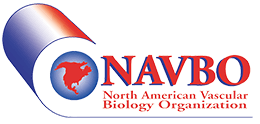Joseph C. Wu, M.D., Ph.D.
December 1, 2018
Simon Stertzer, MD, Professor of Medicine and Radiology
Stanford University School of Medicine
Stanford, CA
Primary Research:
Our laboratory focuses on using patient-specific induced pluripotent stem cells (iPSCs) for cardiovascular precision medicine. We utilize a combination of molecular/cellular biology, genomic-epigenomic-transcriptomic profiling, tissue engineering, physiological testing, and molecular imaging to address the current challenges of developing patient-specific therapies and to uncover mechanisms of various cardiac and vascular diseases. Our research with patient-specific iPSCs include the areas of (i) disease modeling, (ii) precision medicine, (iii) pharmacogenomics and drug discovery, (iv) stem cell biology and cardiac development, and (v) cardiovascular clinical trials. We operate Stanford CVI Biobank, which maintains blood samples and iPSCs from over 1,000 cardiovascular disease patients.
Lab Web Site: http://wulab.stanford.edu/
Members of the laboratory:
Instructors
Ian Y. Chen, MD, PhD
Nazish Sayed, MD, PhD
Haodi Wu, PhD
June-Wha Rhee, MD
Postdoctoral Fellows
Ning Ma, PhD
David T. Paik, PhD
Ilanit Itzhaki, PhD
Edward Lau, PhD
Ian Williams, PhD
Chun Liu, PhD
Lei Tian, PhD
Nadjet Balbachir, PhD
Graduate Students
Alexa Wnorowski
Mohamed Ameen

Recent Publications:
1) Sun N, Yazawa M, Liu J, Han L, Abilez O, Navarette EG, Hu S, Wang L, Lee A, Pavlovic A, Lin S, Chen R, Hajjar RJ, Snyder MP, Dolmetsch RE, Butte MJ, Ashley EA, Longaker MT, Robbins RC, Wu JC. Patient-specific induced pluripotent stem cells as a model for familial dilated cardiomyopathy. Science Transl Med 2012;4(130):130ra47.
2) Lan F, Lee AS, Liang P, Sanchez-Freire V, Nguyen PK, Wang L, Han L, Yen M, Wang Y, Sun N, Abilez OJ, Navarrete EG, Simons CS, Wheeler M, Pruitt B, Lewis R, Ashley EA, Bers DB, Robbins RC, Longaker MT, Wu JC. Abnormal calcium handling properties underlie pathogenesis of familial hypertrophic cardiomyopathy in patient-specific induced pluripotent stem cells. Cell Stem Cell 2013;12(1):101-13.
3) Liang P, Lan F, Lee AS, Gong T, Sanchez-Freire V, Wang Y, Diecke S, Sallam K, Knowles JW, Nguyen PK, Wang PJ, Bers DM, Robbins RC, Wu JC. Drug screening using a library of human induced pluripotent stem cell-derived cardiomyocytes reveals disease specific patterns of cardiotoxicity. Circulation 2013;127:1677-1691.
4) Ebert AD, Kodo K, Liang P, Wu H, Huber BC, Riegler J, Churko J, Lee J, de Almeida P, Lan F, Diecke S, Burridge PW, Gold JD, Mochly-Rosen D, Wu JC. Characterization of the molecular mechanisms underlying increased ischemic damage in the aldehyde dehydrogenase 2 genetic polymorphism using a human induced pluripotent stem cell model system. Science Translational Medicine 2014;6:255ra130.
5) Burridge PW, Li YF, Matsa E, Wu H, Ong SG, Sharma A, Holmstrom A, Chang AC, Coronado MJ, Ebert AD, Knowles JW, Telli ML, Witteles RM, Blau HM, Bernstein D, Altman RB, Wu JC. Human induced pluripotent stem-derived cardiomyocytes recapitulate the predilection of breast cancer patients to doxorubicin-induced cardiotoxicity. Nature Medicine 2016;22(5):547-56.
6) Matsa E, Burridge PW, Yu KH, Ahrens JH, Termglinchan V, Wu H, Liu C, Shukla P, Sayed N, Churko JM, Shao N, Woo NA, Chao AS, Gold JD, Karakikes I, Snyder MP, Wu JC. Transcriptome profiling of patient-specific human iPSC-cardiomyocytes predicts individual drug safety and efficacy responses in vitro. Cell Stem Cell 2016;19(3):311-325.
7) Kodo K, Ong SG, Jahanbani F, Termglinchan V, Hirono K, InanlooRahatloo K, Ebert AD, Shukla P, Abilez OJ, Churko JM, Karakikes I, Jung G, Ichida F, Wu SM, Snyder MP, Bernstein D, Wu JC. iPSC-derived cardiomyocytes reveal abnormal TGF-β signalling in left ventricular non-compaction cardiomyopathy. Nature Cell Biology 2016;18(10):1031-42.
8) Sharma A, Burridge PW, McKeithan WL, Serrano R, Shukla P, Sayed N, Churko JM, Kitani T, Wu H, Holmström A, Matsa E, Zhang Y, Kumar A, Fan AC, del Álamo JC, Wu SM, Moslehi JJ, Mercola M, Wu JC. High-throughput screening of tyrosine kinase inhibitor cardiotoxicity with human induced pluripotent stem cells. Science Translational Medicine 2017;9(377)
9) Churko JM, Lee J, Ameen M, Gu M, Venkatasubramanian M, Diecke S, Sallam K, Im H, Wang G, Gold JD, Salomonis N, Snyder MP, Wu JC. Transcriptomic and epigenomic differences in human induced pluripotent stem cells generated from six reprogramming methods. Nat Biomed Eng. 2017;1(10):826-837.
10) Kooreman NG, Kim Y, de Almeida PE, Termglinchan V, Diecke S, Shao NY, Wei TT, Yu H, Dey D, Nelakanti R, Brouwer T, Paik DT, Barfi I, Han A, Quax PHA, Hamming JF, Levy R, Davis MM, Wu JC. iPSC-based cancer vaccination: an autologous stem cell vaccine against cancer. Cell Stem Cell 2018;S1934-5909
11) Lee J, Shao NY, Paik DT, Wu H, Guo H, Termglinchan V, Churko JM, Kim Y, Kitani T, Zhao MT, Zhang Y, Wilson KD, Karakikes I, Snyder MP, Wu JC. SETD7 drives cardiac lineage commitment through stage-specific transcriptional activation. Cell Stem Cell 2018;22(3):428-444.
12) Ma N, Zhang J, Itzhaki I, Zhang SL, Chen H, Haddad F, Kitani T, Wilson KD, Tian L, Shrestha R, Wu H, Lam CK, Sayed N, Wu JC. Determining the pathogenicity of a genomic variant of uncertain significance using CRISPR/Cas9 and human-induced pluripotent stem cells. Circulation 2018; Epub ahead of print.
13) Paik DT, Tian L, Lee J, Sayed N, Chen IY, Rhee S, Rhee JW, Kim Y, Wirka RC, Buikema JW, Wu SM, Red-Horse K, Quertermous T, Wu JC. Large-scale single-cell RNA-seq reveals molecular signatures of heterogeneous populations of human induced pluripotent stem cell-derived endothelial cells. Circulation Research 2018; Epub ahead of print.
